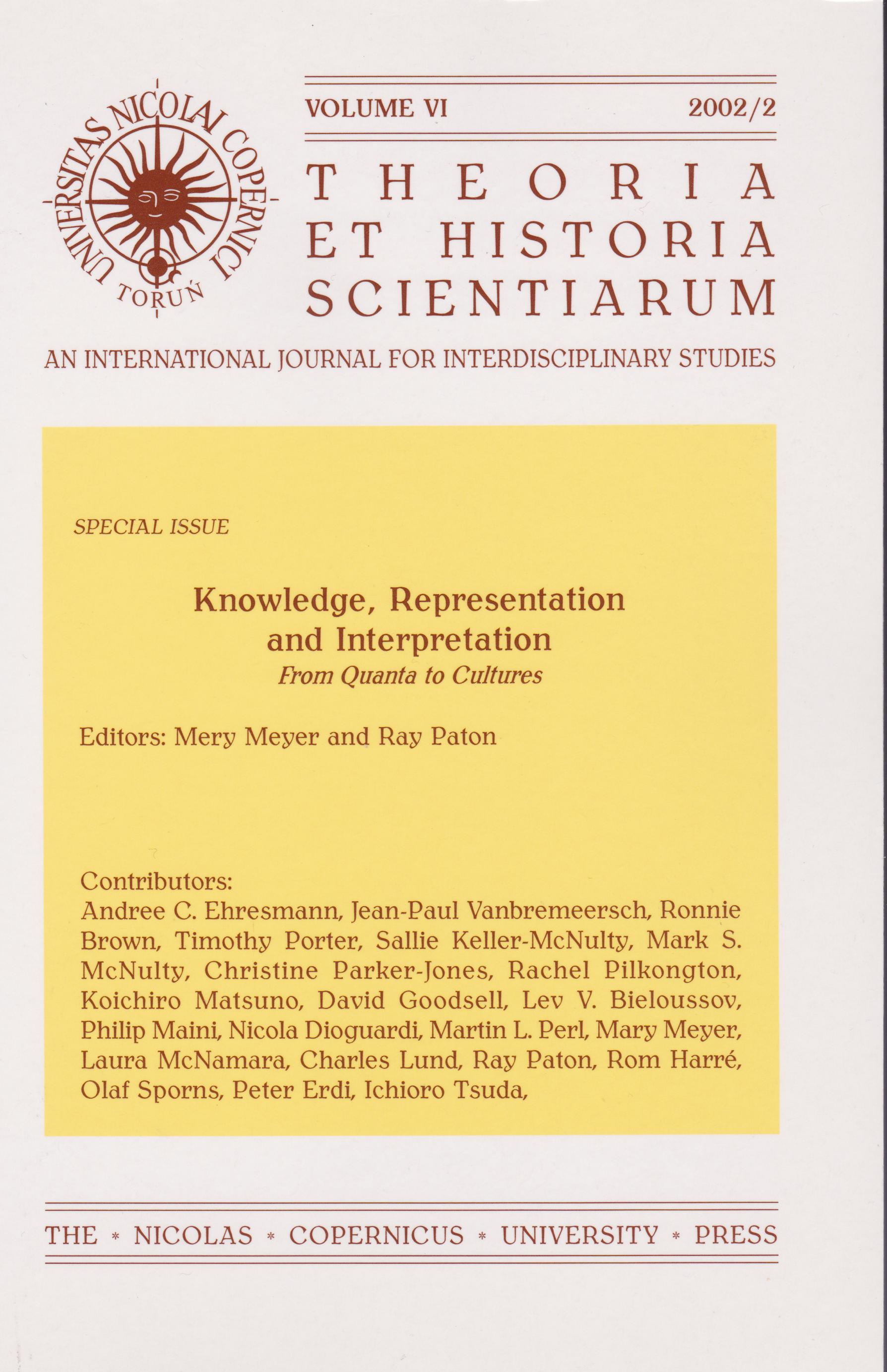Representing Time: The Language of (un)Certainty in Post-Cold-War Los Alamos
DOI:
https://doi.org/10.12775/ths.2002.031Keywords
language, time, Los Alamos National Laboratory, Cold WarAbstract
Based on ongoing ethnographic research at Los Alamos National Laboratory, this paper explores a shift in constructions of time among nuclear weapons experts. It frames the Laboratory’s weapons experts as members of a community of practice organized around the production of confidence in the American nuclear stockpile. Throughout the Cold War, this community’s activities were patterned by several interlocking cycles, including the arms race, cycles of weapons acquisition, and most immediately, a local experimental cycle in which the community designed, engineered, and tested prototype nuclear devices. This local experimental cycle also served as a site for renewing the community and its knowledge, as novice experts acquired skills and abilities and seniors reinscribed understandings about how weapons work. However, these cyclical rhythms broke apart as the Cold War ended, leaving the weapons community without the design-and-test cycle as a central point of social organization. This paper argues that in the wake of these changes, local references to time emphasize a shift from cyclical rhythms of renewal to a more linear understanding of time, in which time has become a force for aging and decay.References
Barley, S. 1988. “On Technology, Time and Social Order: Technically Induced Change in the Temporal Organization of Radiological Work,” pp. 123-174 in Frank Dubinskas, ed. Making Time: Ethnographies of High Technology Organizations (Temple University Press, Philadelphia, PA).
Birely, J. 1987. The Issue of Nuclear Testing. Center for National Security Studies (Los Alamos, NM: Los Alamos National Laboratory).
Bucciarelli, L. 1988. “Engineering Design Process,” pp. 92-122 in Frank Dubinskas, ed. Making Time: Ethnographies of High Technology Organizations (Temple University Press, Philadelphia, PA).
Cimbala, S J. 1998. “The Nuclear Chimera: How Deterrence Really Worked,” pp. 11-35 in The Past and Future of Nuclear Deterrence (Praeger Publishers, Westport, CT).
Dubinskas, F. 1988. “Cultural Constructions: The Many Faces of Time,” pp. 3-38 in Making Time: Ethnographies of High Technology Organizations (Temple University Press, Philadelphia, PA).
Gusterson, H. 1996. Nuclear Rites: A Weapons Laboratory at the End of the Cold War, (University of California Press Berkeley and Los Angeles, CA).
Hecker, S S. 1987. Statement before the Senate Armed Services Committee Concerning TTBT and PNET Ratification, 100th Congress, 1st Session. February 26th.1993. Director’s Statement, pp. 1-1 to 1-5 in Los Alamos National Laboratory: Institutional Plan, FY1993-FY1998, Los Alamos National Laboratory report LALP- 9250 (Los Alamos, NM).
Johnson, K, J Keller, C Ekdahl, R Krajcik, L Salazar, E Kelly, and R Paulsen. 1996. Stockpile Surveillance: Past and Future, Sandia National Laboratories SAND-95- 2751 (Albuquerque, NM).
Lave, J. 1988. Cognition in Practice, (Cambridge University Press, Cambridge, UK). Lave, Jean, and Etienne Wenger. 1991. Situated Learning: Legitimate Peripheral Participation (Cambridge University Press, Cambridge, UK).
Lawrence Livermore National Laboratory. 1985. Nuclear Test Program, Lawrence Livermore National Laboratory Report LLL-TB-57 (Livermore, California) and the U.S. Government Printing Office (Washington, DC).
Los Alamos National Laboratory. 1997. Enhanced Surveillance Program: FY 1997 Accomplishments, Los Alamos National Laboratory report LA-13363-PR (Los Alamos, NM).
Mackenzie, D, and G Spinardi. 1995. “Tacit Knowledge, Weapons Design, and the Uninvention of Nuclear Weapons,” American Journal of Sociology 101 (1), 44-99.
Pinch, T. 1991. “Testing-One, Two, Three ... Testing: Towards a Sociology of Testing,” in Science, Technology and Human Values 18 (1), 25-41.
Reis, V. 1999. “The Race Against Time,” from All Hands Employee Meeting, 26 July, Los Alamos National Laboratory videorecording with embedded video 99-209 (Los Alamos, NM).
Traweek, S. 1988a. Beamtimes and Lifetimes: the World of High Energy Physicists (Harvard University Press, Cambridge, MA).1988b. “Discovering Machines: Nature in the Age of its Mechanical Reproduction,” pp. 39-91 in Frank Dubinskas, ed., Making Time: Ethnographies of High Technology Organizations (Temple University Press, Philadelphia, PA).
United States Congress, Office of Technology Assessment. 1989. The Containment of Underground Nuclear Explosions, OTA-ISC-414 (U.S. Government Printing Office, Washington, DC).
United States Department of Energy, Office of Defense Programs. May 1995. The Stockpile Stewardship and Management Program: Maintaining Confidence in the Safety and Reliability of the Enduring U.S. Nuclear Weapon Stockpile (U.S. Government Printing Office, Washington, DC, available online at http://stsfac.mit.edu/proiects/sbss/ doe.html.f
Van Cleave, W R., and S.T. Cohen. 1987. Preface, Nuclear Weapons, Policies and the Test Ban Issue (Praeger Publishers, Westport, CT).
Wenger, E. 1998. Communities of Practice: Learning, Meaning and Identity (Cambridge University Press, Cambridge, UK).
White, P. 1987a. United States National Security Policy and Laboratory Nuclear Weapon Development: Statement to the Senate Committee on Health and Human Services, State of California Legislature, February 11, the Center for National Security Studies, Los Alamos National Laboratory document (Los Alamos, NM).
b. Test Bans, Legislation and Arms Control, the Center for National Security Studies, Los Alamos National Laboratory document (Los Alamos, NM) June 23.
Observations on the Nuclear Test Ban Debate, the Center for National Security Studies, Los Alamos National Laboratory document (Los Alamos, NM) August 3.
Wolff, W. 1977. A Typical LASL Underground Nuclear Test, Los Alamos Scientific Laboratory report (Los Alamos, NM).
Downloads
Published
How to Cite
Issue
Section
Stats
Number of views and downloads: 416
Number of citations: 0



